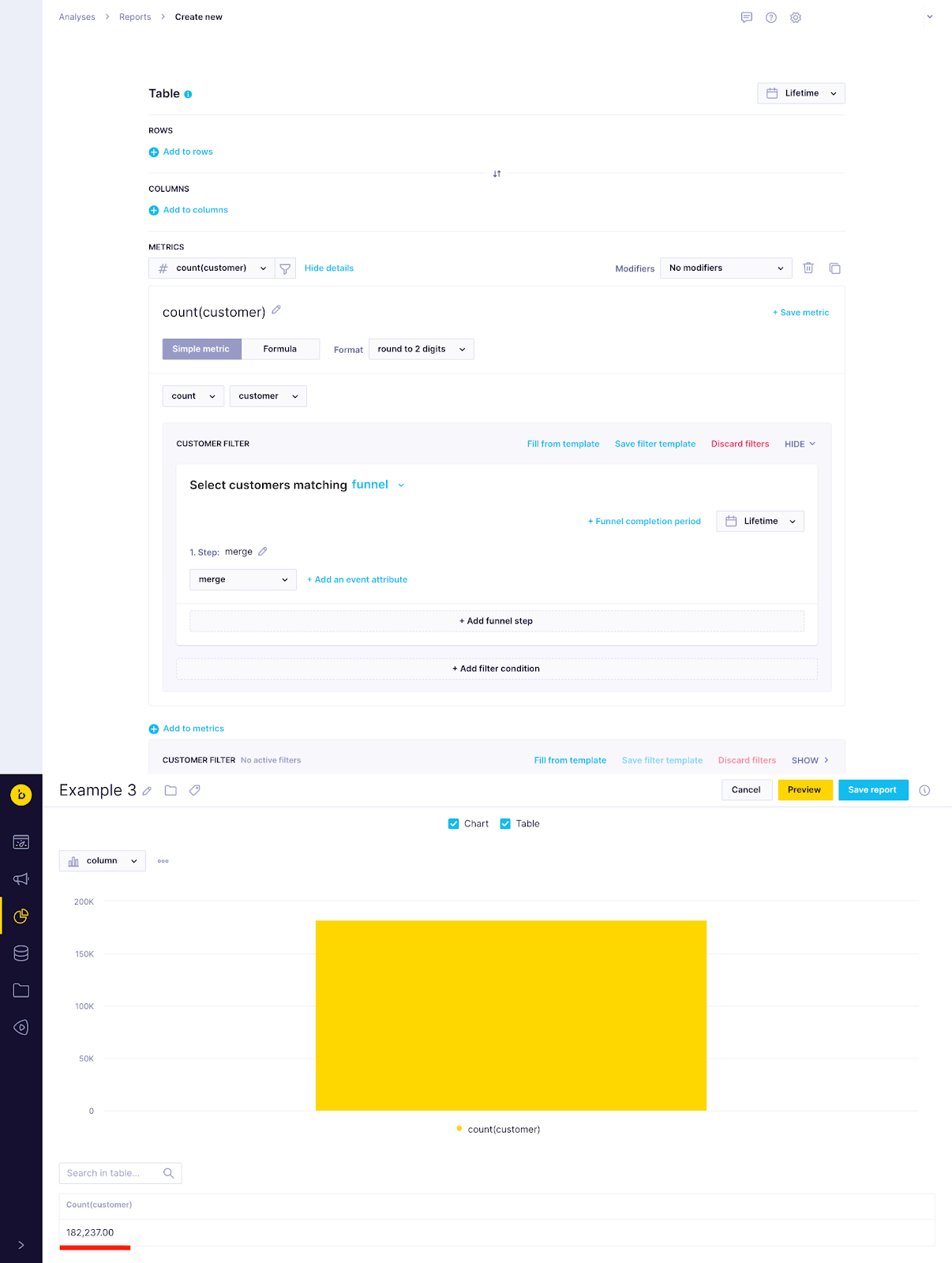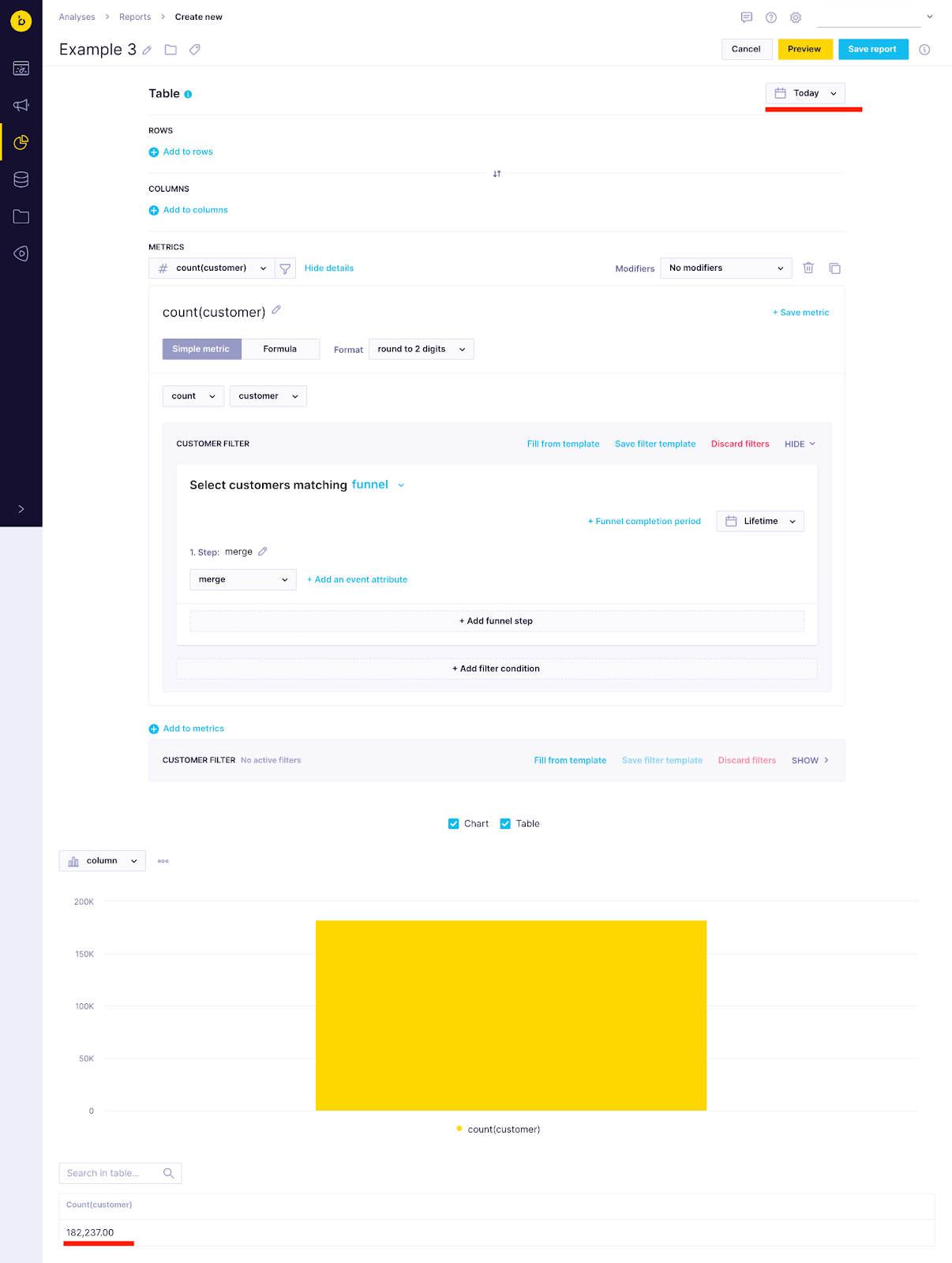Difference Between Customer-based and Event-based Metrics
It is important to understand when to use the appropriate metric type in reports to get correct and reliable results. Each metric adds constraints to the dataset of the report. There are two types of metrics in Engagement that can be used in reports:
-
Customer metrics selects whole customer profiles. Therefore, the output of such metrics is the number of customers that match it, not the number of events. Customer metrics are typically used when there is a need to reflect how many customers with a particular property exist in the project or how many customers have made a specific sequence of actions recorded as events.
-
Event metrics work on the level of individual events. Therefore, the output of such metrics is the number of events. Event metrics are usually used when there is a need to reflect the effectiveness of communication campaigns or calculate how often a certain type of event occurs over a certain period of time in the project, for example, how often and on what days of the week a product is purchased.
Consider the below report as an example. The objective is to check how many customers have received each campaign by drilling down metrics results by campaign name.

Report for checking number of customers receiving the campaign
The report uses customer metrics, and a campaign attribute campaign_name is used in rows. The resulting table gives the number of customers who have received each email campaign.
However, the same result can be achieved using an event-based metric where only the first event per customer is counted.

Same report using Event metrics
So it is important to note that while both metrics can behave quite alike, the choice of a metric type depends on the report context and the desired outcome (customers or events).
Another difference between customer and event metrics is that customer metrics do not react to date filters. Date filters only affect event data (event metrics or event attributes) present in the report. Therefore, the report below shows the number of customers who had at least one merge event in their profiles regardless of when that event happened.

Using Date Filters in Customer metrics
Even if the date filter is changed to Today, the value of the metric remains the same.

No change in the report adjusting the date filter
For the same reason, it is not possible to check when a customer profile was created with a report like this:

Another instance where sorting by profile creation date using customer metrics is not possible
Using a customer filter with an event metric limits events that could be used by the event metric to events from customer profiles selected by a customer filter. This way, if a customer filter is set to select customers who had a campaign event yesterday, only their events are used. The important detail is that all selected customer events are used, regardless of the timeframe set in the customer filter itself.
Consider the following reports, for example, of metrics that count how many times were viewed products with a price greater than 100 to illustrate the usage of an event metric with a customer filter.

Correct way to achieve count of events where products has a price greater than 100

Incorrect way to achieve count of events where products has a price greater than 100
The first image depicts the correct way of achieving the desired output, while the second one is incorrect.
In the first example, you only count those product views where the price of that viewed product is greater than 100. Exactly what you want.
In the second example, however, you count all product views by customers who, at any point in their history, viewed a product with a price > 100. So if customer A viewed product 1 with a price of 200 and then product 2 with a price of 30, your filter would count 2 events. However, if customer B only viewed product 3 with a price of 40 and product 4 with a price of 50, your filter would not count any of those events as this customer never viewed a product with a price >100 and hence does not satisfy the funnel. This is obviously not the output you are seeking.
Did this article help you?
Please provide your feedback. We would like to know if our help center is effective in solving your queries. You can also leave comments and suggestions on how we can make our help articles better. You can also suggest topics you’d like us to cover.
Updated about 2 years ago
